Last month, we started talking about the differences between audio taper and linear taper pots. If you read that column, you’ll recall that audio taper pots are designed to mimic the logarithmic (log) way in which we humans perceive changes in volume. Let’s look at some diagrams to better understand their operation.
Let’s assume we have a strip of carbon that provides 250K ohms of resistance when measured from end to end with a meter. As shown in the following illustration, if you took measurements from either end to the center, you would expect to measure half the total resistance, or 125K.
If you widened the carbon strip overall then it would provide less resistance, meaning more current would flow through it, just as more current can flow through a large wire than through a small wire. Similarly, if you narrowed the carbon strip, then resistance would be increased and less current would flow. But what if you tapered the strip, making it wide at one end and narrow at the other? As you might expect, a tapered strip would provide more resistance at one end than at the other, as shown in the following illustration.
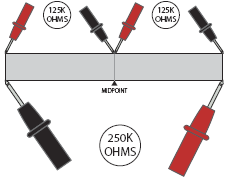 | 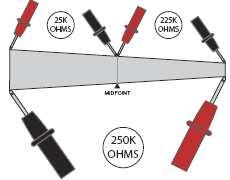 |
You can see that taking a meter reading from the two ends of the strip still produces a resistance of 250K, but now when you measure from the midpoint to either end, you get different readings depending on whether you’re measuring the wider half or the narrower half.
When we talk about pot “tapers”, this is what we are referring to. Back in the early days of electronics, tapering the resistive element was one way to produce a nonlinear potentiometer. Of course, a linear potentiometer wouldn’t have had a tapered element, but nonetheless the term “taper” stuck and is now used universally, regardless of whether we’re speaking of linear or nonlinear pots.
You may have noticed that in the illustration of the tapered element, 10 percent of the overall resistance (or 90 percent, depending on your perspective) is measured at the midpoint. 10 percent is the de facto standard for audio taper pots at the midpoint because it correlates to the log plot (graph) that describes human hearing. That is, at the midpoint, we want the volume to be half as loud, which correlates to a 90 percent reduction in power. So on a scale of 1 to 10 (which is usually what you’ll find on a volume knob, unless you’re Nigel Tufnel), rotating the pot to its midpoint means that the pot lowers the power from 10 down to 1, while our ears perceive a reduction in volume from 10 down to 5.
| LINEAR TAPER | |||
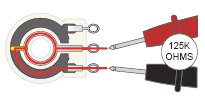 | 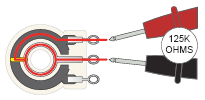 | ||
|
| ||
| AUDIO TAPER | |||
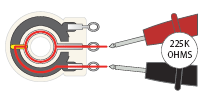 | 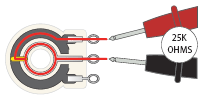 | ||
|
| ||
Tapered resistive elements are a thing of the past as far as I know; they’re certainly not used in pots that are used in the guitar industry. In fact, the carbon element used in guitar pots isn’t even logarithmic – there are tricks used in these pots to simulate a log response, but that’s a topic for a future column. Here are a couple of illustrations showing the concepts presented by the previous illustrations, but applied to guitar pots.
Cool, huh? More next month!
George Ellison
Founder, Acme Guitar Works
acmeguitarworks.com
george@acmeguitarworks.com
772-770-1919














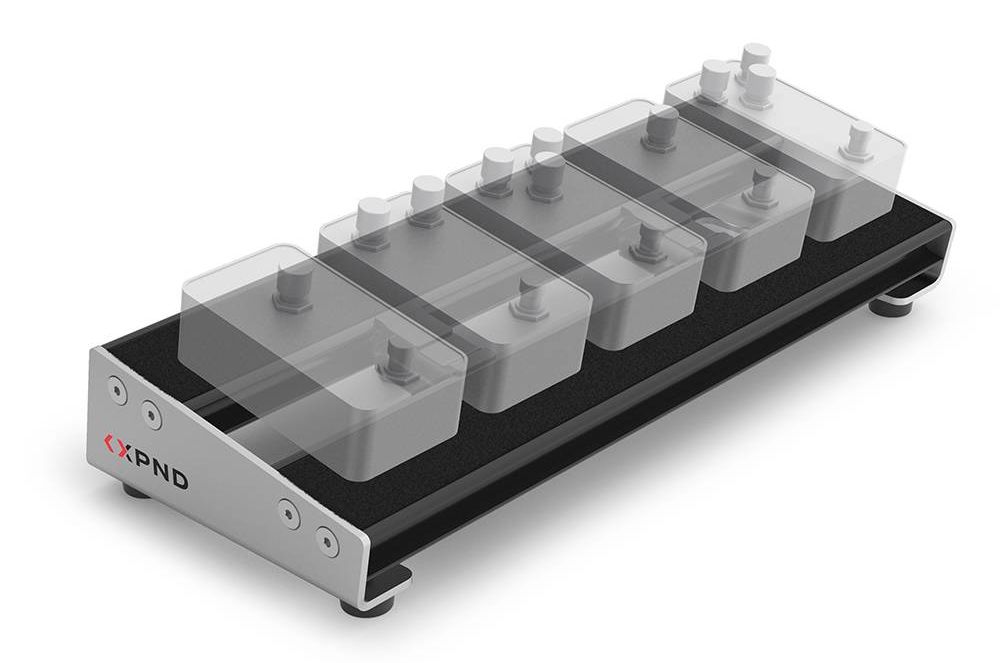




![Rig Rundown: Russian Circles’ Mike Sullivan [2025]](https://www.premierguitar.com/media-library/youtube.jpg?id=62303631&width=1245&height=700&quality=70&coordinates=0%2C0%2C0%2C0)






